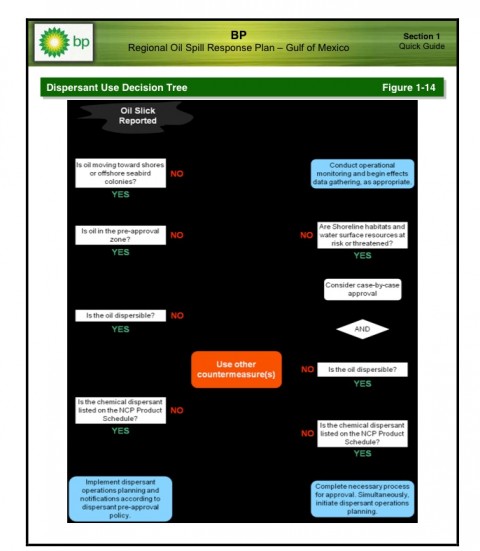Revisiting BP’s Oil Spill Response Plan
I’ve been leafing through BP’s Gulf of Mexico Oil Spill Response Plan, which was the subject of a widely read analysis by the Associated Press. Now that the oil
Jul 31, 202088.7K Shares1.2M Views
I’ve been leafing through BP’s Gulf of Mexico Oil Spill Response Plan, which was the subject of a widely read analysisby the Associated Press. Now that the oil spill is capped, it’s interesting to take another look at the plan, which was posted in fullat NewOrleans.com in June.
It’s quite long, clocking in at 582 pages, and was last revised in June 2009. There are a few sections of particular interest:
- A “rating system” for worst-case scenario spills (page 77)
- BP’s method for estimating spill size, visually and mathematically (page 238-241)
- Oil spill cleanup procedures (page 284-293)
- The company’s dispersant use plan (page 316-356)
- BP’s plan for dealing with the press in the event of a spill (page 529).
BP’s plan for dispersant use is of particular interest given ongoing concerns by environmentalists and some lawmakers like Rep. Edward Markey (D-Mass.)about the long-term impacts of their use. The “decision tree” on dispersant use is one of the more interesting finds in the report. See it below:
In addition, pages 332-334 of the report include a checklist for dispersant use, which gives a sense of what conditions needed to be met before BP employed the use of dispersants. According to the plan, you “need all ‘YES’ answers before dispersant use is acceptable.”
Apparently, the company did answer “yes” to all the questions, but certainly some environmentalists, along with others outside of BP, would quibble with those judgments, particularly whether the potential harm to the environment was worth the risk.

Rhyley Carney
Reviewer
Latest Articles
Popular Articles
